#Terry Nation's Dalek Annual
Explore tagged Tumblr posts
Text


Edgar Hodges - Terry Nation's Dalek Annual 1976
Source
6 notes
·
View notes
Text

the PUNK Dalek year
Dalek Annual 1977 : Terry Nation, BBC : Free Download, Borrow, and Streaming : Internet Archive
20 notes
·
View notes
Text
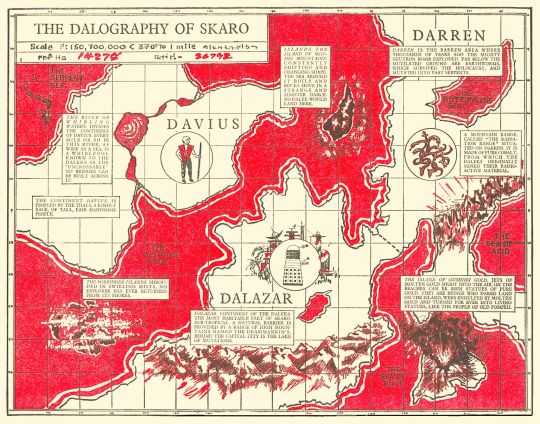

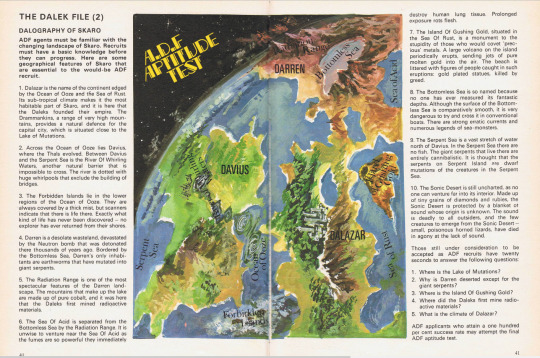

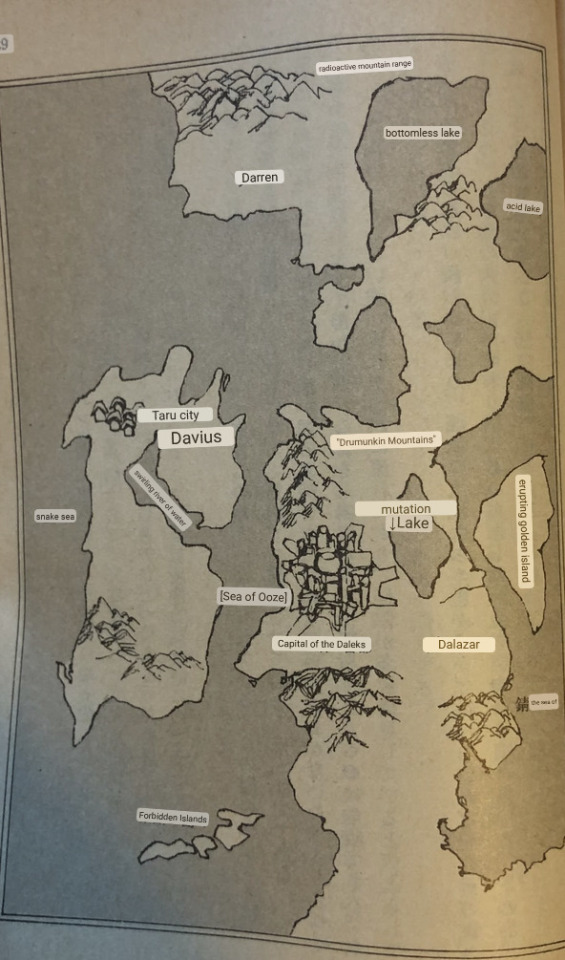

In light of @rassilon-imprimatur's discovery, here's every iteration of Terry Nation's Dalography map to date:
The Dalek Book (30 Jun 1964)
The Dalek Pocketbook and Space-Traveller's Guide (7 Oct 1965)
Terry Nation's Dalek Annual 1979 (Sep 1978)
��レク族の逆襲! / The Dalek Race's Counter Attack! [ie. Day of the Daleks] (15 Aug 1980)
Dalek: The Astounding Untold History of the Greatest Enemies of the Universe (26 Oct 2017)
Some map elements also appear from another perspective in "The Strata of Skaro" from The Dalek Outer-Space Book (8 Sep 1966)

Interestingly, looking at these it becomes obvious that the map in The Dalek Race's Counter Attack! is actually based on the 1979 Dalek Annual, released almost 2 years earlier, rather than one of the original Dalekmania tie-in books. Coastlines match up far better between them and both use a West-East orientation for the map. They both also expand a bit more from the original map margins, revealing areas like the top of Southern Dalazar in the bottom right of the image.
By comparion, Dalek: The Astounding Untold History of the Greatest Enemies of the Universe clearly seems to have gone back to the original design, though we do see some changes. For example, for some reason the Island of Gushing Gold has now become a peninsula off of Darren. There also does seem to be a bit of the same easterly curving of Southern Dalazar, though this may or may not be a coincidence.
#Doctor Who#Skaro#The Dalek Book#Maps#DW Meta#DW Theory#Doctor Who EU#Again you get a nice glimpse of those pre-rust and post-rust colours here#though given how lush it is#the 1979 annual map might well be based on a pre-War Skaro
114 notes
·
View notes
Text
Galactic Gazetteer: Omegon

Type: terrestrial planet
Location: "the very frontiers of space," far from the front lines of the Dalek Wars
Inhabitants: humans
Affiliation: United Planets
Visited by: the Anti-Dalek Force
Appearance: Terry Nation's Dalek Annual 1976
Fun fact: the Daleks tried to destroy the Anti-Dalek Force by luring them to Omegon.
4 notes
·
View notes
Text
Race on to capture Dalek Annual!
Race on to capture Dalek Annual!
A high quality copy of the 1978 Terry Nation’s Dalek Annual has attracted some unusually high bidding in the latest Phil-Comics auction.

Part of a collection of high grade annuals in this week’s auctions that may never have been read, or at least hardly had any handling, current bidding stands at over £50.


Originally released in September 1977 by World Distributors, the annual features a…
View On WordPress
0 notes
Text
60 Years of Doctor Who Anniversary Marathon - Hartnell 8th Review
The Dalek Outer Space Book - Dalek Annual 1966
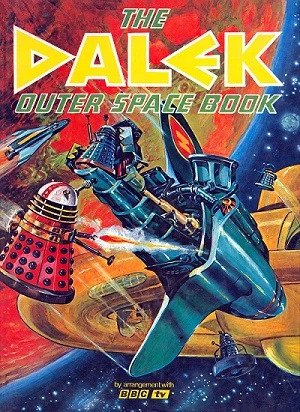
So of course the most popular spin-off from the early days of the franchise is the Doctor’s greatest villain ever, The Daleks. During the early 60s Great Britain was swept up in “Dalekmania” and the creator of the menacing pepper-pots, Terry Nation, tried repeatedly to give the Daleks their own spin-off series.
Over the years there has been movies, plays, audios, comics, novels and even a failed tv series all featuring the Daleks with only the most tenuous connections to the parent show. Which is kind of the reason why any spin-off with them is so shorted lived. Being monstrous space Nazis, you can’t turn them into the protagonists of anything. In order for the Daleks to function narratively you have to have a hero to oppose them, and without the Doctor you’re left floundering for that hero.
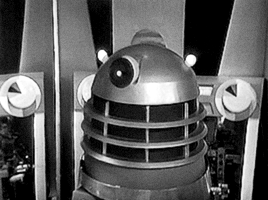
But try, Mr. Nation, did. Today’s outing is the third issue of the Dalek annuals. In terms of science fiction and fantasy media, annuals are anthology collections featuring comics, short stories, games, and activities. Usually they receive one publication a year, hence the name, ‘annuals’, but I have seen other franchises take the same concept and do bi-annual, bi-monthly, or even monthly publications.
Dalek annuals obviously focus on Daleks as the unifying theme of their anthologies, but not every story published within the book features them. The Dalek Outer Space Book is focused on the time period of The Dalek Master Plan and so you get three categories of stories: random one offs of humans counteracting Dalek plots, the adventures of the Sara Kingdom and the Space Security Service, and random sci-fi stories that have nothing to do with either Daleks or Doctor Who but supposedly takes place the same universe/timeline.
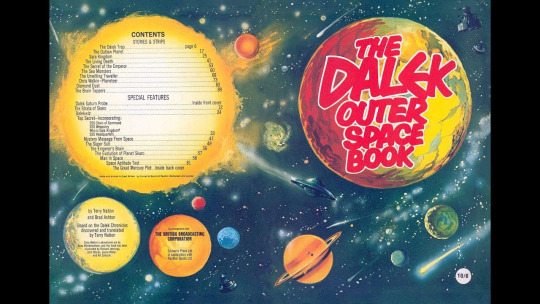
There are eight comics, five short stories, about five games and/or activities of varying quality. The most interesting stories are either the more bonkers, out there variety (like the thief who steals a prototype time machine, the guy who invents a sleeping pill that makes one young, or the Daleks using diamonds to kill people) or the ones featuring Sara Kingdom and her fight against the Daleks before she ever joined up with the Doctor.
I wasn’t expecting any companions to show up in the book and seeing Sara again was a real treat. With her inclusion that means we’ve managed to feature nearly every First Doctor companion save for Ben (unless you want to count his cameo in An Adventure in Space and Time that is). I also enjoy how it fleshed out her backstory more and why she’s so motivated to make the ultimate sacrifice in The Dalek Master Plan. She’s literally made her whole career out of trying to defeat them once and for all.
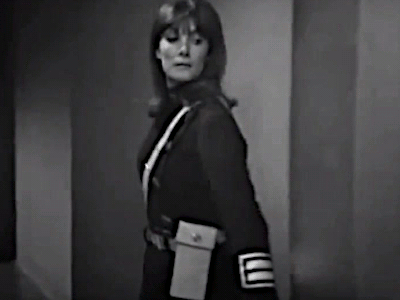
All in all, The Dalek Outer Space Book is a fun diversion but I can also see why the Dalek annuals didn’t last for but a few years. The vast majority of the stories are painfully mediocre and it’s only the occasional truly ridiculous fare or the intermittent presence of Sara Kingdom that elevates the experience.
#doctor who#daleks#sara kingdom#first doctor#william hartnell#the dalek masterplan#the dalek outer space book
4 notes
·
View notes
Text
The Shared Dalek Universe of the 1960s: A Case Study
In 2011 (a little over ten years ago!), El Sandifer cited my dearly-beloved 1960s Who Annuals as examples of stories which ended up influencing the TV series many years down the line despite making an unrepentant hash of continuity.
Her first example is that the Doctor is called Dr. Who, and that he alternates between being from Earth on one page, and not being from Earth three pages later. I would point out that TV was doing much the same thing in those days, and went on flip-flopping basically until Jon Pertwee, so it’s not a terribly good argument to begin with.
However, she spends more time pondering the Daleks of the comics. These Daleks, she notes, are very different from those on television at the time. There are hordes of them, they travel in fleets of saucers, and they’re ruled by the Emperor. This contradiction, she argues, later fed back into the TV series in the RTD era, when huge fleets of Daleks became the norm and, earlier but still well after the first burst of Annuals, in the form of Patrick Troughton facing a very different Dalek Emperor in The Evil of the Daleks.
In no way do I wish to undermine Sandifer’s ultimate conclusion that “canon” in the sense of diegetic consistency is a red herring of little importance, and what matters for any sane definition of ‘canon’ is whether a story is referenced at all, not whether it’s contradicted.
However.
Having gone back to 1966′s The Dalek Outer Space Book, I have made a very startling discovery, in the story entitled The Secret of the Emperor. The rest is after the cut; I will leave you with a delightful panel from this story, showing the “bewildered” Dalek Emperor being bullied by knights at the Battle of Agincourt. (This is one of my favourite Doctor Who images ever, and if it doesn’t put a smile on your face I am not sure I want to take you seriously.)
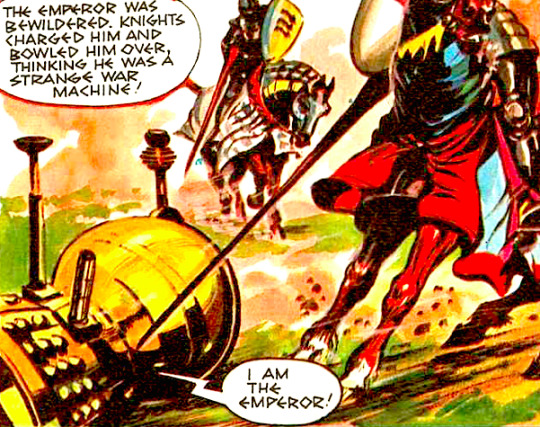
So, famously, when he debuted in the comics, the Dalek Emperor was not the giant, static Dalek later shown on television in The Evil of the Daleks and The Bad Wolf of the Ways; instead, he was golden, squat, and had a bulbous head; to house all the ego, one expects.
Thus, most people will point at the fact that when the Doctor met “the Emperor” in The Evil of the Daleks, he resided in a huge tower-like casing in the Dalek City, as evidence that although ideas received a first treatment in the comics which later made it to screens, no direct continuity was intended; the comics’ Emperor was an alternate, a first draft, to be discarded once a more definitive TV portrayal emerged.
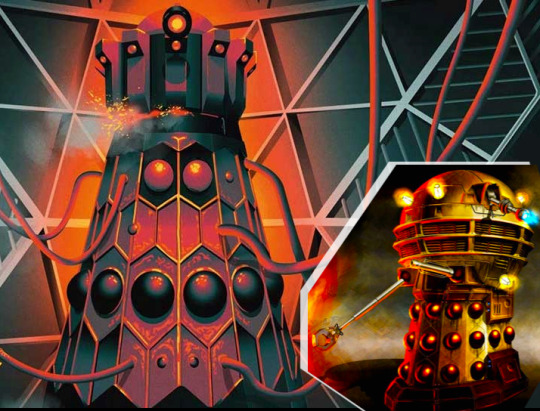
And yet, of course, it is somehow appealing to think of the two as the same Dalek, isn’t it? John Peel (Dalek writer voted most likely to be a 19th century Victorian man who stumbled into a time eddy; it’s mostly the remarkable sideburns) spent a lot of time in his Dalek novels establishing the life story of the Dalek Prime, the First Dalek Ever, who transitioned from the globe-headed casing to the towery Evil one and then deeply regretted it, what with the “getting killed by his own infighting troops with no way to escape”.
But this is usually viewed as a retcon. A cute retcon, an admirable retcon even, but a retcon. My good friend and esteemed fellow canon-welder, @rassilon-imprimatur, espoused such a view four years ago:

Well, all of this is, if you’ll pardon my French, bollocks. John Peel didn’t make anything up, except for the snappy name of “the Dalek Prime” as a designation for the individual. The Dalek Emperor in Evil of the Daleks was always the Emperor of the 1960s comics, and there is a very good reason for his seemingly-contradictory change of appearance. What’s more, I am not talking about murky authorial intent: these are things that the discerning Dalek fan in 1967 was meant to have known.
Let me wind back the clock to 1966. A Dalek master-plan is unfurling, a multi-media agenda spanning several years, more ambitious perhaps than even Time Lord Victorious in its scope; for the ultimate aim of a small cabal of men including David Whitaker, Terry Nation and Brad Ashton is nothing less than spinning the Daleks out of Doctor Who and into their own non-BBC TV show — to be made in America, and in colour, if you please!
For over a year now, a Dalek story arc has been running in the pages of TV Century 21, tracking the early rise of the Dalek Empire and its early interactions with 2060s humanity. Though the Daleks encroach over other parts of the book, including the headline stories, the bulk of this story arc comes in the form of weekly one-page comics making up one long serialised history of the Daleks, under the minimalist title of The Daleks.

Also under the solo brand of “The Daleks”: Annuals, an exclusive audio story, and, of course, toys. Time for Phase Two. It is time to end the Daleks’ endless confrontations with Dr Who on television, and set the stage for a new status quo able to support the TV series Nation dreams about.
Important background: Terry Nation, famously, does not like the Dalek Emperor. Whitaker made him up without consulting Nation, who maintains that the highest rank in the Dalek hierarchy should be the Dalek Supreme. The Emperor was hard to do away with in the comics, since he was basically the protagonist of the TV21 strip, but one imagines Nation was keen to jettison him from the world of the planned TV series.
I am speculating, of course, but I picture Nation sitting in his office, pondering the two great thorns in the side of the Independant Daleks Masterplan.
Thorn one: the Daleks are entangled with the Doctor both diegetically and symbolically; unless something can be done, the Daleks will remain “the Doctor’s enemies”, and a show where they commit evil and the Doctor fails to show up would ring false with the kids watching. The Daleks must be removed from Doctor Who in a sensational and definitive manner, or the whole enterprise is a nonstarter.
Thorn two: I, Terry Nation, have foolishly allowed David Whitaker to shape the lore of the Daleks, and he has made this Dalek Emperor guy very central to early Dalek history, leading up to the 22nd century Dalek Invasion of Earth that most of the Doctor’s subsequent conflicts with the Daleks have stemmed from. But I do not like the Dalek Emperor. I wish I could get rid of him in my new status quo.
…………Aha.

A triumphant Terry Nation adds a post-it note to the ever-widening corkboard representing the multimedia Dalek Masterplan setting up the TV series, which must already include things like “convince Jean Marsh to come back as Sara Kingdom”. Notes distilled from this corkboard will form the backbone of The Dalek Outer Space Book, this year’s Dalek annual, which exists principally to set up the prospective main characters of the new TV series: Sara Kingdom and Agent Mark Seven, of the Space Security Service.
The new post-it note reads:
Construe the Daleks’ enmity with the Doctor as a personal enmity between the Doctor and the Emperor, a la Sherlock Holmes and Moriarty. Have the Doctor triumph over the Emperor on TV in a big ‘event’ story.
Result: the Doctor-vs-Daleks storyline is over; the Emperor is dead; I get everything I ever wanted.
(Except maybe a pony.)
Then he phones David Whitaker, smirking all the while like an evil genie preparing to grant a badly-worded wish.
“Good news, old chap, I’ve decided you can write a new Dalek story for the BBC, all by yourself. I promise I won’t interfere.”
*confused and delighted David Whitaker noises*
“ And you can even bring in that Dalek Emperor of yours. Yes, you heard me!”
*Whitaker enthusiasm intensifies*
“Ahhh, but there’s a catch. The Dalek Emperor must DIE.”
Of course, like all good Faustian bargains, this is irresistible even though it is ruinous and the victim knows it to be ruinous. Whitaker agrees to the scheme. He and Nation begin planning out the events of the great finale of the Dalek-Doctor confrontation, which will hit the screens in 1967 as the mildly racist, but otherwise quite well-loved, ‘The Evil of the Daleks’.
Quickly enough, it is decided that Patrick Troughton crouching to berate the short and bubble-headed Golden Emperor would look silly. If the Emperor appears on TV, alongside human performers, then it should tower over them. Besides, this is to be the archvillainous Dalek Emperor’s last stand, and certain traditions must be followed.
Hence another task is added to the bucketlist of the Dalek Outer Space Book: tell the story of how the Emperor transformed from the globe-headed dwarf to some huge and terrible towering form under the Dalek City, for the Doctor to stumble onto later. This rebuilt Emperor may be teased, but must not be truly seen or truly defeated in the book; that would defeat the whole idea.
Hence, The Secret of the Emperor, a story which sees the Emperor becoming self-conscious about his own efficiency and letting the Scientist Daleks rebuild his casing from scratch. The final page is a splash panel, a delightfully nonsensical diagram of the mechanical components of the new casing.

The almost surreal array of colours and shapes is so arresting as to obscure an important detai. Many have seen this page over and over, and yet still missed it. The recent(ish) ‘Anatomy of the New Dalek Emperor’ artwork from Time Lord Victorious clearly looked at this page for reference, in spite of the fact that the TLV Emperor is much more inspired by the old Emperor than the rebuilt one.
Let me spell it out for you: look at the Scientist Daleks in the top right and centre-left. Look at them.
The new Emperor is huge.
And what else?
That Scientist on the left is plugging huge wires snaking from the wall into the tower-casing.
He now resides in the Great Hall of the Dalek City.
The background wall is a weird checkered pattern.
In addition, the following facts are seeded throughout the earlier pages of The Secret of the Emperor.
The point of moving to the new casing was to grant the Emperor increased brain capacity (suitable for concocting masterplans).
He acquired said increased brain capacity to help the Daleks attempt to overcome humanity once and for all.
The Emperor has recently had a trautmatic but eye-opening experience with time travel.
Ignore the fact that the Emperor was here depicted with what appears to be a still fairly bulbous, and golden, head, and it doesn’t take a genius to figure out that this is very, very direct setup for how the Doctor finds the Dalek Emperor in The Evil of the Daleks — tower-like, in an imperial throneroom in the Dalek City, with a checkered wall pattern, planning out a complicated scheme to harness time travel as a means of defeating humanity once and for all!
Yes, the designs don’t quite match — but how could the artist behind the visuals of Secret of the Emperor have known precisely what Shawcraft would build, a year later, based on the same basic description by Nation & Whitaker? The parallels far outweigh the minor differences in execution. (It’s worth noting that elsewhere in the Outer Space Book a different artist drew what was clearly intended to be the Golden Emperor as a large, golden, but normally-proportioned Dalek, so it’s not like the visual descriptions of these scripts were exceedingly precise…)
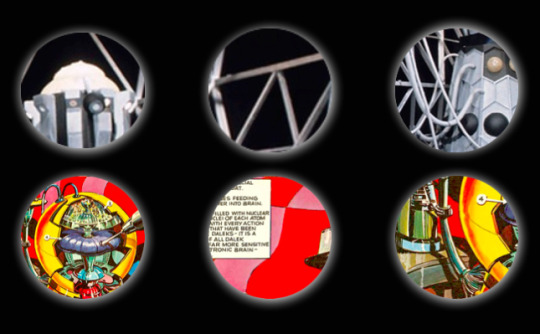
The rebuilt Emperor is never seen in the Outer Space Book outside of this ‘dissection’: he is heard throughout The Brain Tappers but kept carefully off-panel, and his new and dangerous new casing is pointedly not destroyed in the story’s conclusion. Well, of course not. That’s what Dr Who is for.
tl;dr: it is not a post hoc retcon, or even a secret, that the round-headed Emperor of the comics became the Dalek Emperor of Evil of the Daleks. A holistic view of the state of Dalek media in 1966-1967 shows that, in fact, it was the whole point that this be the Emperor of the comics; and that the comics had begun setting this up long before Patrick Troughton encountered Edward Waterfield on TV.
And thus, to circle back to Sandifer’s 2011 post, it is not enough to simply say that the “seemingly non-canon” comics inspired the show down the line. In fact in this instance, what appeared on Doctor Who existed for the benefit of the Daleks spin-off — not vice-versa!
#Daleks#Canon-Welding#Doctor Who#Analysis#Doctor Who Meta#Dalek Emperor#Dalek Prime#The Evil of the Daleks#Terry Nation#David Whitaker#Brad Ashton#The Secret of the Emperor#El Sandifer#Canon#Jacob Black
76 notes
·
View notes
Text
This Year's Exclusive Doctor Who Release for Record Store Day is Dalek Terror
This Year's Exclusive #DoctorWho Release for Record Store Day is Dalek Terror #RSD2021
This year’s special Doctor Who release for Record Store Day is something a bit different: Dalek Terror is an exclusive vinyl compilation featuring four stories taken from Terry Nation’s Dalek Annuals. These are pressed on 2 stunning 140g “Extermination Splatter” vinyl and presented in a gatefold sleeve with retro-style illustrations. Record Store Day takes place on Saturday 12th June 2021, and…

View On WordPress
#Dalek Terror#Louise Jameson#Matthew Waterhouse#Nicholas Briggs#Nick Briggs#Record Store Day#Terry Nation
0 notes
Text
CANTLON: HOCKEY NEWS AND NOTES VOLUME 4 PART 1

eing t: Gerry Cantlon, Howlings HARTFORD, CT - The Hartford Wolf Pack hockey season stopped suddenly but is still getting awards from across the hockey universe. Wolf Pack captain, Steven Fogarty, was named the winner of the Wolf Pack's IOA/American Specialty Team Man-Of-The-Year. He and the winners from the other 31 AHL Teams became eligible to win the AHL Yanick Dupre Award. Over the past five seasons and recently as the Wolf Pack team captain this year, Fogarty is one of the most admired players both on-and-off the ice. Fogarty is a Notre Dame grad and always expresses his calm and friendly demeanor toward fans, teammates, and media alike, and always willing to participate in ways to help the community. He's attended several fan-related events, volunteered his time at shelters, worked with youth programs such as the Police Athletic League (PAL), the annual Bowl-a-Thon for Special Olympics, and many other team-related community initiatives. Fogarty, of Edina, MN, was actively involved in youth/school reading programs, has made several hospital visits at the Connecticut Children's Medical Center in Newington, and has been a leader behind the commitment and participation of Wolf Pack players at community and team events. Fogarty is now one of 31 finalists for the AHL's 2019-20 Yanick Dupre Memorial Award, honoring the overall winner of the IOA/American Specialty AHL Man-Of-The-Year. The naming of the Yanick Dupre Award is after the former Hershey Bears forward and AHL All-Star who died in 1997 following a 16-month battle with leukemia. The announcement of the winner of the Yanick Dupre Memorial Award will be later this spring. The first winner of the award was defenseman John Jakopin from the Beast of New Haven in 1997-98. Jakopin played one season for the Wolf Pack 2003-04. Some other team winners include Sound Tigers winner, goaltender, Christopher Gibson, former Wolf Pack, Daniel Walcott (Syracuse), and former Yale University Bulldog, Kenny Agostino (Toronto). Another milestone day would be this Good Friday. It would have been the last regular season home game for the Wolf Pack scheduled against the Lehigh Valley Phantoms. The day was to be the celebration of the 2000 Calder Cup Championship team complete with the Calder Cup, autograph and picture signings, and a post-game party at the Tavern, but, like everything else, the COVID-19 pandemic caused its cancelation. Those scheduled to attend included Derek Armstrong, Brad "Shooter" Smyth, Terry Virtue, Todd Hall, J.F. Labbe, Tony Tuzzolino, P.J. Stock, Daniel Goneau, Mike Harder, Chris Kenady, Stefan Cherneski, and head coach John Paddock. Also on the invite list would have been Medical trainer Tim Macre and equipment manager Jason Levy, then Wolf Pack GM, Don Maloney, and Rangers president Neil Smith. Former Wolf Pack reporters, Bruce Berlet (Hartford Courant), and George Dalek (Meriden Record-Journal) were also going to take part in the festivities. TOM WEBSTER Sad news for New Englan / Hartford Whaler fans was the passing of Tom Webster, 71, of brain cancer at his home in Windsor, Ontario, with family at his side. His wife, Carole, passed away earlier in the past year. His daughter, Stacy, and his son, Brent, as well as grandchildren, survive him. Webster was "Mr. New England Whaler." He played six-of-their-seven WHA years, and his number 8 brought many a cheer at Hartford Civic Center in the glistening early years of professional hockey in Hart City. Bruce Landon, the then goalie for the New England Whalers, was complimentary in praise, "Tom was a great guy and good teammate, tremendous player. It's a sad day for hockey," Webster finished first with 215 career goals and 425 points. He was third in assists with 205, just behind Larry Pleau and Rick Ley. Webster was fourth in games played at 352 games behind only Rick Ley, Brad Selwood, and Larry Pleau. He finished as the 13th all-time leading goalscorer in the seven wild years of the WHA. The WHA elected him to their Hall-Of-Fame in 2012. He hung with the best of the WHA, including Real "Buddy" Cloutier, Robbie Ftorek, Anders Hedberg, and eventual teammate, Andre Lacroix. Webster topped the Whalers as their only 50-goal scorer in franchise history (53) and 103 points in their first season in Boston winning their Avco Cup title and first and only franchise title. "He was a dynamic player," commented former teammate, Tim Sheehy from Florida. "He, Terry Caffery, and Brit Silby were an excellent line. Silby was an NHL Calder Trophy winner (with Toronto in 1965-66), and Caffery (WHA Rookie of the Year) set him up so many times. He was a great finisher." In Webster's second season, he didn't lead the team in scoring. He was second by two points behind John French with 43 goals and 70 points. In the first year in Hartford, 1974-'75, he finished second to Wayne Carleton but tallied 40 goals and 64 points. In 1975-76 Webster was limited to just 55 games due to injuries but still managed to lead the Whalers with 33 goals and 83 points for the Kelly-Green harpooned logo Whalers. In 1976-77 he scored 33 goals and 85 points behind only Mike Rogers in assists. In 1977-78 his last active season in Hartford, his severe back injury limited him to just 20 games, but he was a point-a-game producer still with 15 goals and 20 points. The Whalers knocked off Edmonton and Quebec before losing in four to the mighty Winnipeg Jets in the Avco Cup final. He missed the entire last season of New England Whaler 1978-79 because of third back surgery. Many New England Whaler fans felt Webster's number eight should have been retired instead of the late Johnny "Pie" McKenzie's 19. Howard Baldwin, Sr. strictly did it, to antagonize the Bruins. The Bruins led by owner Jeremy Jacobs never voted for the Whalers to be a part of the NHL and forced them to abandon New England from their team name as a price of admission into the NHL. It was then and still is, a glaring oversight that it was never retired. After a low-ball post-career job offer, Webster ended his playing days in Glen Falls, NY, with a brand new AHL team, the Adirondack Red Wings as a player-coach and got in his last NHL game with Detroit. Before landing in Hartford, Webster was drafted by the Boston Bruins with the fourth pick, 19th overall, in the 1966 NHL Draft. They were the last six team draft before the first NHL expansion in 1967. He led the Niagara Falls Flyers and then OHA (now OHL) ins scoring 50 goals and 114 points in 54 games winning the Eddie Powers Trophy, but was voted only to the OHA Second All-Star team. The team won their second Memorial Cup in three years by downing the Estevan Bruins in five games with Webster scoring the double-overtime winner in Game 4, still the longest game in Memorial Cup history. Webster posted 18 points in 10 games of the tournament In 1965, they beat the Edmonton Oil Kings in five games as well in Edmonton. The 1968 team would feature three future New England Whaler teammates in Gary Swain, who finished number two behind him in scoring, Rick Ley and Brad Selwood and two future NHL'ers, Phil Roberto and Phil Myre. He played at the beginning of the early big, bad Bruins before they won a pair of Stanley Cups, but only got 11 games in three years. He played two years in Oklahoma City (CHL) before being involved in a merry-go-round of transactions. The Buffalo Sabres took him in the 1970 NHL expansion draft on June 10, 1970, but before he ever got to wear a Sabres sweater, he was dealt the same day to Detroit for Roger Crozier. Webster took advantage of the chance with the Red Wings and, in 1970-71, led them in scoring in 78 games with 30 goals and 67 points. Webster played on the last Gordie Howe Red Wing team that also featured Alex Delvecchio, Garry Unger, Red Berenson, and future star a rookie named, Mickey Redmond. He would play against Howe in the WHA when he was in Houston and was reunited with him on the New England Whalers in 1977. In 1971-72 his back problems first surfaced that saw him limited him to five games with the Red Wings and was traded again to the California Golden Seals for Ron Stackhouse on October 22, 1971. Then four months later, on February 12, 1972, he was taken in the WHA General Draft by the New England Whalers, and his hockey course was set. Webster had an even longer coaching career starting with an AHL Calder Cup championship for Adirondack in 1980-81 in just their second year of existence and the first of four the franchise would have. After two years, he went to coach the Tulsa Oilers in the old Central Hockey League, winning the title with future Whaler Dave Barr and future Ranger and current Vegas President of Hockey Ops, George McPhee. He then migrated to Salt Lake City (IHL) and was hired by the Rangers, but he coached just 15 games with Rangers in 1985-86 before resigning, because an acute inner ear infection prevented him from flying. Webster then spent two years with Windsor (OHL) in a bus orientated league from 1987-89, leading the Spitfires to their first OHL championship. The team had a 21 game playoff winning streak in 1988, getting to the Memorial Cup final in Chicoutimi, Quebec, but wound up losing in heartbreaking fashion 7-6 to the Medicine Hat Tigers coached by Barry Melrose. The team featured Ranger great Adam Graves and two current NHL coaches Peter DeBoer and Paul Maurice and NHL playing brothers, Darryl and Darrin Shannon. Maurice, who collected his 700th win this season, holds Webster as his primary coaching role model. "Tom Webster would be the guy," he said." He was my junior coach, who I eventually hired as an assistant coach in the NHL. He would absolutely be the man who influenced me the most. Really, really intense guy, but a big family guy, very emotional guy. Systems. That was kind of the first time I heard of the word systems, like, 'Hey, we've got a plan here.' After coaching the 1989 Canadian National Junior Team at the WJC tournament in Anchorage, Alaska finishing fourth, Webster returned to the NHL. He spent four years as the head coach of the Los Angeles Kings from 1989-1992 amassing, a solid record of 115-94-31 helping the Kings win their first franchise division title in 1991. Ironically, he was replaced with Barry Melrose. Webster coached the Detroit Jr. Red Wings (OHL) for one year in 1992-'93, then the next five seasons, he was as an Assistant Coach in the NHL for the two years in Philadelphia, the last season of the Hartford Whalers in Connecticut and their first two seasons in Carolina with the Hurricanes. He concluded his coaching career back in Windsor with the OHL Spitfires for four seasons till 2002. He was a long time pro and amateur scout with the Calgary Flames from 2003-2014 before retiring. Webster is the seventh member of the 1972 championship team to pass away being preceded by Mike Byers, John Cunniff, Teddy Green, Rick Jordan, Al Smith, and Tommy Williams. Read the full article
#ADA#AdamGraves#AHL#AndersHedberg#AndreLacroix#BarryMelrose#BeastofNewHaven#BostonBruin#BostonBruins#BruceBerlet#BruceLandon#BuffaloSabres#CalderCup#CalgaryFlames#CentralHockeyLeague#CHL#ChristopherGibson#DerekArmstrong#DonMaloney#EdmontonOilKings#FamilyGuy#GeorgeMcPhee#GerryCantlon#GordieHowe#HartfordCivicCenter#HartfordCourant#HartfordWhalers#HartfordWolfPack#HersheyBears#HowardBaldwin
0 notes
Text
The Voord is out...
(I’ve been writing about Big Finish since 2001 one, for my old fanzine, the Finished Product, the Big Finish Companion, and Vortex. And in all that time, I’ve only been to one studio day. Producer David Richardson was kind enough to allow me to come along to the recording of Domain of the Voord, the first story in the Early Adventures range, with Carole Ann Ford and William Russell, which was written by Andrew Smith. Here’s the Rutherglen Reformer story from the time of its release - from September 11, 2014 - almost 18 months after it was recorded!)

Over the last few years, Rutherglen writer Andrew Smith has been revisiting his Doctor Who days.
The former Stonelaw High pupil became the first fan of the BBC series to write for it in 1980, when he sent in a speculative idea that was made into a four-part story for Tom Baker’s final season as the Time Lord.
Andy has since been writing Doctor Who plays for Big Finish Productions, a London-based company who produce audio plays starring the original stars of the series.
Now, the firm have launched a new range of stories, the Early Adventures, recreating the earliest years of Doctor Who, with Andrew having written the first story in the range. His story, Domain of the Voord, features an alien race which were created by Terry Nation, the man behind the Daleks.
Producer David Richardson said: “They are a monster that have never been back since The Keys of Marinus, yet they have a huge amount of potential for new stories. I’d rather like to bring them back again actually - Andrew has filled in some fascinating backstory, and Terry Nation created a fantastic foe.”
Andy, who retires from the police this week, said: “It just started from an email from David Richardson, saying, ‘We’ve got a new range coming up, the Early Adventures. I was given a couple of original cast members from the earliest episodes of Doctor Who with Carole Ann Ford and William Russell, and the Voord. I came up with a handful of ideas, one of which involved the TARDIS landing on a ship amidst a massive flotilla, with all these ships travelling across an expanse of ocean, and just took it from there.
“I was doing some research, reading a Doctor Who Magazine article by Jonny Morris on The Keys of Marinus, looking at the history of the Voord in other stories and where they had appeared - one was in an annual story, The Fishmen of Kandalinga, and the other was in Doctor Who Magazine, The World Shapers, where it was revealed they had turned into the Cybermen. I decided pretty quickly I would take no account of that!”
Andrew was delighted to work with the Voord, whose background and genesis were largely left blank by Terry Nation.
“It was great fun to do - the Voord look amazing, although there are a number of questions left unanswered, and some contradictions, about them in their TV story. For instance, what does a Voord look like? They have a very striking look, and you want to keep that, but one possibility in Keys of Marinus is that they are wearing protective suits in order to cross the acid sea. Of course, the look is great, and I wanted to keep that, but that meant coming up with a rationale for why they would look as they do having an acid sea to cross. So, together with my first pitches, I wrote up a few paragraphs on where I wanted to go with the Voord whatever story idea David favoured. Listeners will learn what it means to be Voord ...”
He also had the challenge of working on the Early Adventures, in a new format of play - not quite full cast, and not a dramatised reading either - with ‘live’ drama and narration both playing a part in telling the story.
Andrew explained: “It was unusual, but it’s the best of both worlds - you can cover long periods of time quite quickly and there’s licence to explain what’s happening, but if you have got characters interacting, you don’t want to have them describing things, but you can let the listener know where they are and what’s happening by using the narration, and there’s clever ways of doing it. John Dorney, script editor for this series, came up with the helpful pointer that these should sound like the BBC audio soundtracks of the lost stories from the sixties, where narration tends to set up a scene but is otherwise used fairly sparingly.
Having had original Doctor Who stars Colin Baker, Nicola Bryant and Lalla Ward performing his previous Big Finish work, Andrew was delighted to have his latest work brought to life by actors who had appeared in the very first episode, broadcast on November 23, 1963, with William Russell as science teacher Ian Chesterton, and Carole Ann Ford as Susan, the Doctor’s granddaughter.
Andrew admitted there was a real thrill about writing for people who had been there at the genesis of Doctor Who, and said :“It’s great, with William Russell performing the dialogue for Ian and the Doctor, and Carol doing Susan and Barbara. It was really nice to meet them in the studio - they were fantastic, giving great performances, and were very complimentary about the script. When you are writing something like this for them, it’s lovely to think you’re writing for two people who were there, 50 years ago, right at the very beginning when Doctor Who first started.
“It was quite exciting at the time, as we were in studio last January, just at the start of the anniversary year, and there were discussions about who had been cast to play them in Mark Gatiss’ drama An Adventure in Space and Time.
“It was a delight to bring those characters to life.”
Earlier this year, Andrew had another play released, as part of a critically acclaimed series based on seventies TV hit Survivors.
There was a real surprise on the day of recording of Domain of the Voord, as Andrew soon discovered that he wasn’t the only former Rutherglen resident involved with the play. One of the actors cast, Andrew Dickens, had previously been in the Royal Navy, and had stayed just off Main Street for the best part of a year.
“That was just unbelievable, it’s a very small world.
“We had a really talented guest cast, with Andrew Dickens and Andrew Bone, as well as Daisy Ashford, who was the daughter of Caroline John, who played Jon Pertwee’s companion Liz Shaw, and Geoffrey Beevers, who was one of the actors who played the Master.
“We wanted it to have a feel to it, as it had been performed in the 1960s, so the director Ken Bentley had the actors speaking in RP (Received Pronunciation), rather than using regional accents as we would if it had been written for now. It really feels like a bit of 60s Doctor Who. For instance you get the Doctor arguing with his companions, and Ian in particular getting annoyed with him. I hope it takes listeners right back to those very earliest days of the show.”
Andrew remembers the second day of recording with amusement, as he was heading to the police Burns Supper afterwards, and attended the session at the Moat Studios wearing his kilt.
He added: “I’ve written a few things for Big Finish in recent years, but I’ve not looked forward to anything like this. This is the one that I really can’t wait to hear - everyone did such a good job on it. I can’t wait to hear that slice of 60s Doctor Who brought back to life.”
Domain of the Voord is available now on CD and for download, from www.bigfinish.com.
0 notes
Text
Dalek Audio Annual review
Dalek Audio Annual review
If you get the chance, you could do worse than give the two-disc Dalek Audio Annual a listen. Read by Nick Briggs, Louise Jameson and Matthew Waterhouse it’s a collection of stories and piece from the 1970s series of Terry Nation’s Dalek Annuals. It’s a bit dated in places but still a decent piece of entertainment in its own right.
(more…)
View On WordPress
0 notes
Photo
Throwback to this bit of continuity. By accident, I only just discovered the concept of Dalek immortality itself goes back to David Whittaker and Terry Nations "The Dalek World" - the second Dalek annual, from 1965:


I mean... ok it's not a perfect match per say, given that Missy explicitly says the Daleks do age, but that's basically just semantics. And besides, the Know Your Enemy info is clearly quite incomplete, being written presumably by humans either in the 1960s, or sometime between the TV21 'present day' and the 22nd Century Dalek Invasion, depending on how it's interpeted.
Anyway, the lack of death due to natural causes, by comparison, is pretty consistent.






Doctor Who: Revolution of the Daleks / The Witch’s Familiar | Dalek Immortality
“Even the recon scout Daleks, the first ones out of Skaro. Humanity bands together, vanquishes you, and buries you for centuries.“ “YET I SURVIVED.” “Yeah… you’re good at that. But it won’t be enough.”
#Doctor Who#Resolution#The Witch's Familiar#Daleks#The Dalek World#Dalek Chronicles#TV Century 21#Terry Nation#Doctor Who EU
247 notes
·
View notes
Text
Coming Soon: Daleks Destroy - The Secret Invasion and Other Stories
Coming Soon: #DoctorWho Daleks Destroy - The Secret Invasion and Other Stories
This December, a new audio title is released, exploring the Daleks’ adventures from Terry Nation’s Dalek Annuals, which many Doctor Who fans won’t have experienced before.
The anthology title includes readings by several familiar names: Nick Briggs, voice of the Daleks on TV since 2005, as well as for Big Finish; Terry Molloy, who played creator, Davros, in numerous TV serials in the 1980s;…
View On WordPress
#Dalek Annual#Daleks#Daleks Destroy: The Secret Invasion and Other Stories#Davros#Jon Culshaw#Nicholas Briggs#Nick Briggs#Steven Pacey#Terry Molloy#Terry Nation
0 notes